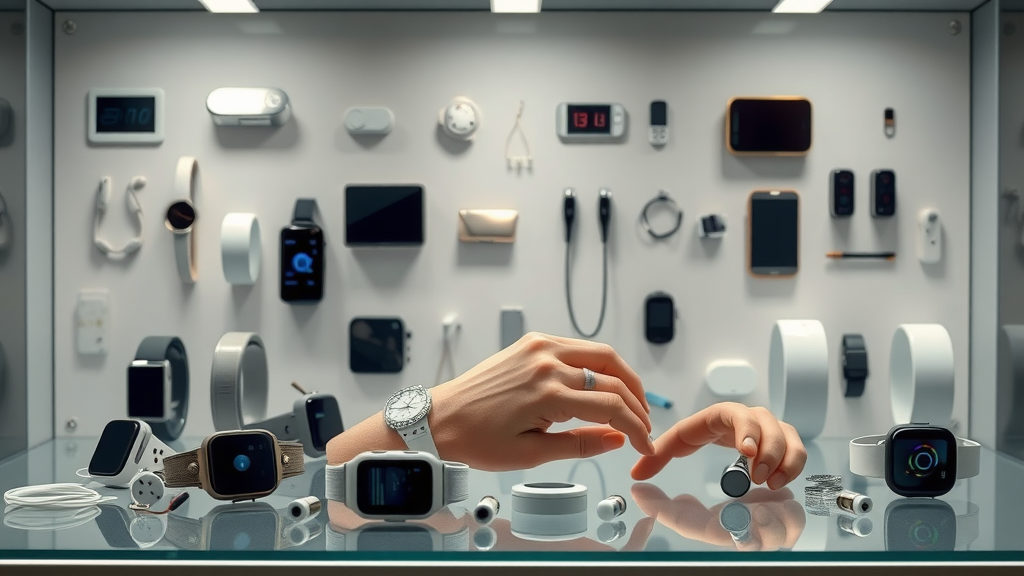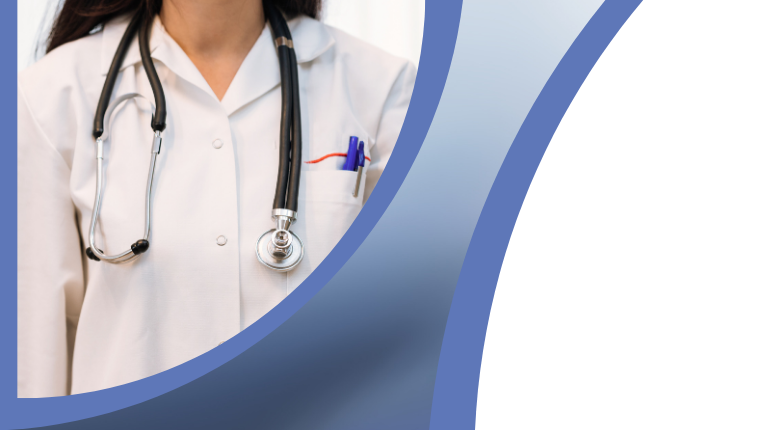Did you know? Studies show that hospitals embracing remote therapeutic monitoring are seeing up to a 40% reduction in patient readmissions —a statistic that’s shaking up the future of healthcare. With digital health solutions rapidly gaining ground, remote therapeutic monitoring (RTM) is no longer an experiment but a necessity for outcome-driven treatment management . In this article, you’ll discover the statistics, the science, and the actionable strategies behind this revolutionary approach—equipping you to maximize patient care like never before.
Unveiling the Power of Remote Therapeutic Monitoring: Statistics, Facts, and Impact
Remote therapeutic monitoring is rapidly changing the medical landscape, blending continuous physiological data gathering with actionable insights. A recent survey highlighted that over 63% of U.S. health care professionals have adopted or plan to adopt some form of RTM within the next year. What's more, clinics leveraging RTM technologies have recorded measurable improvements in treatment adherence and sustained reductions in hospital readmissions—major benchmarks for patient and provider success. The power of RTM lies in its dual benefit: not only does it enhance clinical oversight, but it also empowers patients to proactively engage in their own therapy adherence and long-term health.
These digital health tools serve as a bridge between clinical visits, providing ongoing monitoring of musculoskeletal system health, the respiratory system, and more. For instance, patients with chronic conditions like asthma or diabetes can transmit real-time data from their approved medical device directly to a qualified healthcare professional. This constant flow of information leads to earlier interventions, optimized cpt coding and billing, and ultimately, better patient outcomes. The significance of RTM is reinforced by both improved patient satisfaction scores and better resource allocation for care professionals—resulting in a healthcare system that is both efficient and truly patient-centric.

A Groundbreaking Change: How Remote Therapeutic Monitoring Is Transforming Healthcare
The adoption of remote therapeutic monitoring marks a groundbreaking change in care delivery models. By enabling continuous, secure connections between patients and providers, RTM breaks down traditional barriers—bringing proactive care to the patient’s home, workplace, or wherever life happens. Across diverse clinical settings, professionals are reporting that RTM-supported workflows lead to more informed clinical decisions, reduced burden on emergency departments, and even a boost in staff satisfaction thanks to streamlined digital communication tools.
- Remote therapeutic monitoring adoption rates continue to accelerate across all specialties.
- Impact of remote therapeutic monitoring on readmission reduction is substantial, with some hospitals reporting up to 40% fewer readmissions.
- Key benefits for patients and providers include better chronic disease management, real-time alerts, and improved patient compliance.
Understanding Remote Therapeutic Monitoring: The Fundamentals
To appreciate the rise of remote therapeutic monitoring , it’s critical to understand its foundational elements. At its core, RTM is a digital health strategy that uses medical devices, secure cloud platforms, and interactive communication channels to track a patient’s response to treatment in real-time. Unlike sporadic in-person checkups, RTM captures valuable therapeutic monitoring data around the clock, allowing care professionals to observe therapy adherence patterns with remarkable accuracy. For patients, this removes the guesswork—making every step of their journey closely supported by their healthcare team while allowing them greater flexibility and comfort in their daily lives.
The fundamentals of RTM revolve around the concept of continuity in monitoring and immediate intervention. Whether it’s managing musculoskeletal system rehabilitation or providing cognitive behavior support, RTM delivers a layer of accountability for both patients and care providers. The information collected is not just about numbers; it's a robust digital health resource that fuels cpt code optimization, improves documentation, and ensures that interventions are both timely and evidence-based.
What Is Remote Therapeutic Monitoring?
Remote therapeutic monitoring is the use of medical devices and digital platforms to track non-physiological and physiological data from outside the traditional clinical environment. This may involve wearables that record therapy adherence, smart inhalers that measure medication usage, or connected physiotherapy devices that log musculoskeletal system recovery exercises. What sets RTM apart is its focus on actionable insights: the data isn’t just collected, it’s analyzed in near real-time by a qualified health care professional, such as a physician, nurse practitioner, or physical therapist.

Patients benefit from reminders, progress notifications, and opportunities for interactive communication—all of which support higher compliance with prescribed regimens. Meanwhile, providers can easily adjust treatment management strategies based on ongoing therapeutic monitoring, identify outliers in data trends, and initiate necessary interventions early. This makes RTM especially valuable in chronic disease management, post-surgical follow-up, and ongoing respiratory system therapy adherence.
Remote Therapeutic vs. Therapeutic Monitoring: Key Differences
While both therapeutic monitoring and remote therapeutic monitoring aim to assist clinicians in tracking therapy progress, they differ fundamentally in methodology and scope. Traditional therapeutic monitoring often relies on periodic check-ins , self-reporting, or in-clinic assessments. In contrast, RTM leverages digital devices and real-time feedback to create a comprehensive, continuous record of patient data, facilitating more dynamic adjustments to treatment management.
"Remote therapeutic monitoring expands the horizon of care outside clinical walls, paving the way for continuous, data-driven treatment strategies."
This distinction is essential as RTM provides care professionals with a broader data set—not only assessing adherence and outcomes but also delivering alerts when therapy adjustments may be required. As a result, remote therapeutic monitoring enhances overall patient safety, reduces administrative burden, and facilitates integration with EHR/EMR systems, all while improving patient engagement and satisfaction.
How Remote Therapeutic Monitoring Works in Clinical Practice
Implementing remote therapeutic monitoring in clinical practice involves both technological and workflow shifts. Qualified healthcare professionals select appropriate medical devices for each condition, ensure seamless data integration, and design treatment management protocols that make use of real-time physiological data. This ecosystem not only enhances the clinical oversight of chronic and acute conditions but also brings patients and providers together through meaningful digital interactions.
Clinical success with RTM depends upon the integration of patient data with existing systems, training staff on new rtm service workflows, and ensuring that cpt codes and pt code requirements are met for proper reimbursement. Providers must proactively engage patients, addressing concerns about privacy, data use, and therapeutic adherence. As digital health adoption grows, continuous education on effective device usage and interpretation of complex physiological data has become an essential component of provider training, ensuring RTM delivers on its promise of better, more coordinated care across every patient journey.
How Clinicians Implement Remote Therapeutic Monitoring
- Selection of appropriate medical device: Clinicians identify which medical device —such as wearable sensors, smart inhalers, or adherence trackers—best fits the therapeutic goals and patient lifestyle.
- Collection and interpretation of physiological data: Devices automatically log and transmit mechanical, behavioral, or physiological data to secure platforms, where a healthcare professional reviews trends and alerts.
- Adjustment of treatment management plans: Based on the collected data, care professionals can change medication dosages, recommend therapy modifications, or alert patients about progress and potential issues.
- Engagement with patients through digital platforms: Real-time feedback and interactive communication channels keep patients motivated, accountable, and involved in their care plan—maximizing therapy adherence.
Integrating these steps into daily clinical workflows results in more personalized treatment management while easing documentation for CPT and PT codes. The approach also allows care professionals to quickly spot gaps in therapy adherence, ensuring every intervention is targeted and timely.
Remote Therapeutic Monitoring in the Patient's Journey
For patients, experience with remote therapeutic monitoring is both empowering and reassuring. Instead of waiting weeks between appointments to share progress or concerns, patients continuously provide real-time feedback to their care team through connected devices and mobile apps. For example, a physical therapy patient might wear a smart brace that automatically records range-of-motion exercises, sending data directly to their therapist and receiving motivational nudges to stay on track.

Throughout the therapeutic monitoring journey, care professionals can intervene early—before a minor issue escalates into an emergency. This improves patient engagement, streamlines communication, and builds a sense of partnership. Additionally, detailed physiological data enables personalized messages and progress benchmarks that contribute to higher satisfaction and better long-term outcomes, presenting rtm service as a true driver of value in health care settings.
Why Remote Therapeutic Monitoring Matters: Evidence and Outcomes
The evidence supporting remote therapeutic monitoring is mounting rapidly. Comparative studies consistently reveal higher compliance rates, reduced need for in-person assessments, and fewer complications when patients are supported through remote digital health solutions. In particular, RTM has made significant strides in managing therapy adherence and optimizing chronic condition care, such as those involving the respiratory system or musculoskeletal system rehabilitation.
| Key Metrics | Remote Therapeutic Monitoring | Traditional Monitoring |
|---|---|---|
| Patient Engagement Level | High | Moderate |
| Data Frequency | Real-time/Continuous | Periodic/In-person |
| Condition Coverage | Broad | Limited |
| Reduction in Hospital Visits | Significant | Minimal |
These outcomes underscore the immediate value of RTM codes and the broader use of cpt codes and pt codes for tracking appropriate reimbursement. Improved management of chronic diseases, quick alerts about therapy gaps, and a data-rich environment all foster a more responsive, efficient, and patient-centered system.
Key Outcomes of Therapeutic Monitoring Through Remote Tools
RTM tools have transformed the way qualified health care professionals and patients interact. Notably, these platforms significantly enhance patient compliance, which is often a major hurdle in long-term disease management. When patients are empowered with technology, reminders, and easy-to-understand progress reports, their willingness—and ability—to adhere to therapy increases.
- Enhanced patient compliance
- Improved management of chronic conditions
- Data-driven treatment decisions
- Streamlined provider workflows

For providers, the streamlined documentation and clear clinical pathways supported by RTM services mean that interventions can be tracked and credited for value-based care programs. Ultimately, both sides gain: patients feel more in control of their health journeys, while providers are able to deliver better care, maximize cpt code usage, and meet the requirements of payers like Medicaid services and the Centers for Medicare & Medicaid Services.
Remote Therapeutic Monitoring Codes: A Guide to CPT, PT, and RTM Codes
Understanding CPT codes , PT codes , and RTM codes is crucial for maximizing the benefits of remote therapeutic monitoring, both clinically and financially. The Centers for Medicare & Medicaid Services (CMS) have issued specific guidance on billing requirements for RTM service documentation, making compliance easier for qualified health care professionals who want to expand their telehealth offerings.
CPT codes for RTM (such as 98975–98977) were introduced to capture the value of digital health and medical device data in clinical workflows. These codes recognize the work involved in collecting, interpreting, and acting on real-time remote therapeutic monitoring data. For PT code compliance, care professionals must ensure active involvement in therapy guidance, patient engagement, and interactive communication.
Understanding CPT Codes for Remote Therapeutic Monitoring
Current Procedural Terminology (CPT) codes are foundational to billing for RTM services. Codes 98975, 98976, and 98977 are tailored to capture different phases of remote therapeutic monitoring, including initial setup, device supply, ongoing data collection, and patient interactions. Each CPT code represents a unique component of RTM and must be paired with accurate clinical documentation to support reimbursement.
These CPT codes ensure that both Medicare and private payers recognize the clinical value and effort involved in remote therapeutic interventions. This, in turn, incentivizes greater adoption among clinicians eager to lead the digital transformation of patient monitoring. Proper use and understanding of CPT codes streamline workflow, reinforce compliance, and help qualified healthcare professionals build sustainable telehealth offerings that truly benefit patients and practices alike.
PT Codes and Their Role in Therapeutic Monitoring
Physical Therapy (PT) codes in remote therapeutic monitoring play a unique role in linking physiological data gathering to musculoskeletal system therapy and rehabilitation plans. PT codes require clear, thorough documentation of patient engagement, progress checks, and interventions. By integrating RTM data, physical therapists can support targeted, evidence-based interventions—maximizing patient outcomes and strengthening their clinical position.
- Highlight of new CPT codes for remote therapeutic monitoring
- Explanation of pt code requirements
- Overview of rtm codes in clinical documentation

Ultimately, robust use of PT and RTM codes underscores the professionalism and modernity of healthcare practices, ensuring they remain compliant with rapidly evolving CMS guidelines and at the forefront of digital health delivery.
Decoding the Role of Medical Devices in Remote Therapeutic Monitoring
Medical devices form the backbone of remote therapeutic monitoring, translating real-world patient activities into actionable clinical intelligence. The latest digital health devices range from simple medication adherence sensors to sophisticated wearable technology capable of continuously monitoring complex physiological data. Their integration into RTM service workflows provides unparalleled accuracy, reduces manual entry, and empowers both patients and providers with automated progress updates.
Device diversity and evolving standards require care professionals to carefully select and integrate technology best matched to their patient’s therapeutic goals. The proper medical device ensures data reliability, patient comfort, and seamless interoperability with EMR/EHR systems, establishing the foundation for ongoing digital health innovation.
Types of Medical Devices Used in Remote Therapeutic Monitoring
The array of medical devices supporting remote therapeutic monitoring is impressive and expanding. Wearable activity trackers monitor steps taken in a musculoskeletal therapy program; smart inhalers measure respiratory system medication usage; and Bluetooth-enabled devices collect both adherence and physiological data for comprehensive therapy oversight.

Choosing the right medical device depends on therapeutic goals, patient preferences, and cpt code requirements. RTM-compliant devices must be secure, accurate, and user-friendly—ensuring both high-quality data and strong patient engagement throughout the care journey.
Integrating Medical Device Data for Enhanced Physiological Data Analysis
Successfully integrating medical device data into existing workflows unlocks new opportunities for real-time analysis, early detection of therapy gaps, and streamlined reporting for both clinical and billing purposes. Automated digital health platforms effortlessly sync device input with patient records, providing healthcare professionals with dashboards that present relevant physiological data and actionable trends at a glance.
From risk stratification to predicting complications and highlighting progress milestones, seamless device integration transforms every RTM service into a comprehensive tool for treatment management and continuous improvement. As a result, clinicians can shift from reactive care to predictive, preventive interventions—helping their patients achieve better outcomes, every day.
Treatment Management and Remote Therapeutic Monitoring: A Synergistic Approach
The synergy between treatment management and remote therapeutic monitoring lies at the heart of modern digital health. By uniting live physiological data streams with adaptive therapy plans, clinicians can close the loop between monitoring and intervention, providing personalized, outcome-driven care for every patient.
This synergy is not just beneficial for patients. Qualified health care professionals enjoy greater clinical clarity, reduced administrative burden, and increased ability to meet payer regulations—all while ensuring more comprehensive documentation for CPT and PT codes.
How Treatment Management Is Optimized with Remote Therapeutic Monitoring
Real-time patient updates allow for immediate therapy management adjustments, avoiding the delays often experienced in traditional care models. Providers can intervene at the first signs of therapy non-adherence, adverse reactions, or deteriorating health—transforming patient care from reactive to proactive. Interactive notifications and reminders sent through digital health platforms also enhance therapy adherence, underpinning a continuous cycle of monitoring, intervention, and improvement.
By optimizing treatment management through RTM, care professionals foster stronger patient-provider relationships, reduce the risk of complications, and ensure that every intervention is backed by data—not guesswork. This optimization supports value-based care models, streamlines reporting for CPT and PT codes, and ultimately leads to superior outcomes for all stakeholders.
Best Practices for Physiological Data Interpretation and Action
Effective physiological data interpretation starts with accurate data collection from medical devices, automatic validation through your chosen digital health platform, and vigilant oversight by qualified health care professionals. Best practices include setting personalized alert thresholds, regular trend analysis, systematic patient feedback, and continuous team education on both new technologies and evolving cpt code requirements.

When integrated into a structured RTM workflow, these best practices ensure earlier interventions and smoother transitions from acute care to self-management, with comprehensive documentation for auditing, reporting, and payer compliance.
RTM Services in Healthcare: Implementation and Value
RTM services are fast becoming staples of modern clinical practice. Their value lies in extending the capacity of providers to oversee and guide care outside the clinic. Implementing these digital health solutions requires an investment in staff training, patient education, and careful integration with existing EHR/EMR systems—but the rewards are tangible: improved clinical outcomes, streamlined documentation, and more robust financial reimbursement.
Strong implementation of RTM services demonstrates a clinic’s commitment to patient-centered care and its readiness to lead in the digital-health age. According to recent case studies, practices that have embraced RTM platforms report increases in patient satisfaction scores and measurable care cost reductions, confirming growing enthusiasm across the health care sector for this approach.
Types of RTM Services Available in Modern Practice
RTM services can be tailored to a wide variety of clinical needs, from orthopedic recovery programs and respiratory system oversight to behavioral health monitoring and chronic disease management. Options range from full-featured device ecosystem integrations to more streamlined mobile app solutions.
This service flexibility gives practices the opportunity to expand their digital offerings, meet evolving cpt code and rtm code requirements, and better serve their diverse patient populations.
Case Studies: Real-World Impact of RTM Services
Consider a mid-sized orthopedic clinic that implemented wearable sensors for post-surgery patients. Within six months, the clinic documented a 25% decrease in unscheduled visits and improved therapy adherence outcomes. Similarly, a respiratory care practice using smart inhalers and RTM platforms saw a reduction in asthma-related ER visits by nearly one-third.
These success stories underline the widespread impact of RTM services: optimizing patient engagement, supporting effective treatment management, and ensuring value-based reimbursement opportunities for forward-thinking clinics.
Remote Therapeutic Monitoring vs. Remote Patient Monitoring: Drawing Clear Boundaries
Though often mentioned together, remote therapeutic monitoring and remote patient monitoring (RPM) are distinct. While both rely on advanced technology and real-time data streams, remote therapeutic monitoring is centered on therapy adherence and non-physiological data (like medication usage or exercise completion), while remote patient monitoring typically focuses on physiological data, such as blood pressure or glucose readings.
Understanding these differences is crucial for accurate cpt code and rtm code usage, as well as for meeting payer eligibility and clinical compliance requirements.
Defining Remote Patient Monitoring in Relation to Remote Therapeutic Monitoring
Remote patient monitoring (RPM) involves the ongoing collection and transmission of patient vital signs to a healthcare professional for analysis and intervention. Classic examples include blood pressure cuffs, glucose meters, and ECG monitors, primarily used for chronic disease management. In contrast, remote therapeutic monitoring measures how well a patient is completing planned therapies, such as using an inhaler, following physical therapy routines, or adhering to medication schedules.
These differences in focus and data types inform everything from clinical workflow design to cpt and pt code billing strategies, and highlight why both tools are complementary within modern digital health programs.
Comparing Use Cases and Eligibility Criteria
Appropriateness for RTM or RPM depends on both patient condition and care goals. RPM is typically reserved for conditions with clearly defined physiological markers (like heart failure or diabetes), while RTM is best for chronic conditions requiring structured therapy adherence, musculoskeletal system rehab, or respiratory system management.
Clinicians must stay abreast of evolving eligibility criteria, ensuring patients are matched to the right digital health service with appropriate device integration, documentation, and cpt/pt code assignment.
| Feature | Remote Therapeutic Monitoring | Remote Patient Monitoring |
|---|---|---|
| Focused Data | Non-physiological, adherence | Physiological |
| Common CPT Codes | 98975-98977 | 99453-99458 |
| Devices Used | Medical and adherence devices | Physiological monitors |
Overcoming Challenges in Implementing Remote Therapeutic Monitoring
The shift to remote therapeutic monitoring can be challenging for many practices, as it requires new expertise, processes, and occasionally updates to technology infrastructure. Common hurdles include training staff on rtm service workflows, educating patients about device use and privacy, and ensuring that data systems are compatible with EMR/EHR platforms.
However, these obstacles can be overcome with strategic planning. Many organizations leverage incremental adoption, foster ongoing staff education, and partner with trusted technology vendors to support seamless integration. Patient education initiatives, in particular, are vital for maximizing device adoption and therapy adherence, further closing the gap between remote therapeutic monitoring theory and day-to-day practice.
Strategies for Maximizing Success with Remote Therapeutic Monitoring
- Staff training for remote therapeutic monitoring workflows
- Patient education initiatives
- Integration with existing EHR/EMR systems

These strategies, when consistently applied, unlock the true value of RTM service offerings—creating sustainable, scalable, and patient-centered systems that thrive in an increasingly digital health landscape.
The Future of Remote Therapeutic Monitoring: Trends and Innovations
The rapid evolution of remote therapeutic monitoring is set to define the next frontier in patient-centered digital health. Emerging technologies—including AI-powered data analysis and advanced wearable sensors—are expanding the possible applications of RTM, from personalized risk assessments to real-time intervention for complex chronic conditions.
As patient and provider adoption grows, and as CPT and PT code guidance continues to evolve, future-focused clinics will reap the rewards of early investment in digital health leadership.
Emerging Technologies Enhancing Remote Therapeutic Monitoring
AI-driven platforms, next-generation wearables, and real-time data visualization tools are making RTM more powerful and user-friendly than ever before. These innovations allow care professionals to catch subtle trends or warning signs far earlier, enhancing intervention and outcome tracking.

From predictive analytics to automated progress reports, these technologies will define the future of digital health, making remote therapeutic monitoring an indispensable staple in every modern healthcare practice.
Artificial Intelligence and Data Analytics in Therapeutic Monitoring
Artificial intelligence is revolutionizing how care professionals interpret large volumes of physiological data collected through RTM. Machine learning models can now predict patient deteriorations, non-adherence, and optimal therapy adjustments in real time—freeing clinicians from data overload while increasing accuracy and responsiveness.
"The ongoing evolution of remote therapeutic monitoring is positioned to set new standards in patient-centered care, powered by innovation and technology."
As adoption of these technologies increases, we can expect more personalized, precise, and scalable care—offering hope for millions faced with chronic conditions.
Essential FAQs: Remote Therapeutic Monitoring
What is remote therapy monitoring?
Remote therapy monitoring (RTM) is a digital health approach where clinicians use medical devices and software to track patient adherence and progress outside the clinic. Data is securely transmitted in real-time for professional review, supporting earlier interventions and more personalized treatment management. RTM focuses on therapy adherence, activity tracking, and non-physiological data for enhancing outcomes.
Does Medicare pay for RTM?
Yes, Medicare reimburses for remote therapeutic monitoring through designated CPT codes such as 98975, 98976, and 98977, among others. To qualify, services must be provided by a qualified healthcare professional and meet active monitoring and documentation standards described by the Centers for Medicare & Medicaid Services (CMS).
What conditions qualify for RPM?
Remote patient monitoring (RPM) is most commonly used for chronic conditions with measurable physiological markers, like hypertension, diabetes, heart failure, or COPD. Eligibility is determined by clinical need, device compatibility, and adherence to established CPT code billing practices.
What is the difference between RPM and RTM?
The key difference is that remote patient monitoring (RPM) focuses on physiological data like vitals, while remote therapeutic monitoring (RTM) measures therapy adherence and non-physiological data, such as exercise completion or medication usage. RPM is most common in cardiology and endocrinology, while RTM is used for musculoskeletal, respiratory, and adherence-focused care.
Practical Application Video: How to Integrate Remote Therapeutic Monitoring into Your Practice
For a demonstration of best practices, device choices, and workflow strategies for implementation, explore our practical video walkthrough. This guide will help your healthcare team quickly and confidently bring RTM into patient care routines.
Video Tutorial: Best Medical Devices for Remote Therapeutic Monitoring Explained
Get an in-depth comparison of leading RTM medical devices, feature sets, and real-world provider experiences to help you choose the right technology for your practice and specialty needs.
Key Takeaways on Remote Therapeutic Monitoring for Healthcare Professionals
- Improves patient care and engagement
- Supports outcome-driven treatment management
- Helps practices expand reimbursable digital services
Maximize Patient Outcomes with Remote Therapeutic Monitoring Today
Start integrating remote therapeutic monitoring—empowering your team to deliver data-driven, proactive, and truly patient-centric care for the digital age.
 Add Row
Add Row  Add
Add 



Write A Comment